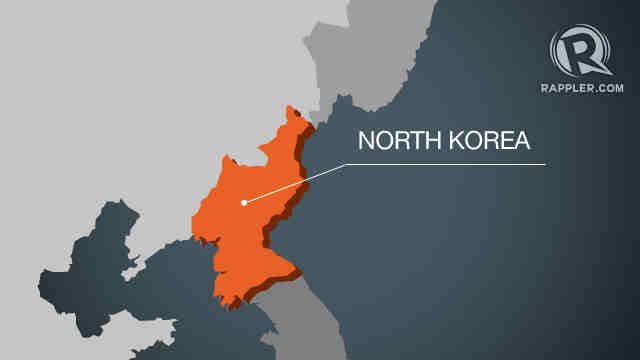SUMMARY
This is AI generated summarization, which may have errors. For context, always refer to the full article.

SEOUL, South Korea (4th UPDATE) – Nuclear-armed North Korea conducted two back-to-back tests of a powerful new medium-range missile on Wednesday, June 22, with both achieving a significant increase in flight distance over previous failed launches, South Korea’s Defense Ministry said.
Both tests were believed to be of a much-hyped, intermediate-range Musudan missile – theoretically capable of reaching US bases as far away as Guam.
International condemnation was swift, with the United States, NATO and Japan labelling the launches a clear violation of UN resolutions, and South Korea vowing to push for tighter sanctions on Pyongyang.
Existing UN Security Council measures ban North Korea from any use of ballistic missile technology.
The first test shortly before 6:00 am (2100 GMT Tuesday) was deemed to have failed after reportedly flying around 150 kilometers (90 miles) over the East Sea (Sea of Japan).
According to Japanese military monitors, the second missile attained a height of 1,000 kilometers and a range of 400 kilometers – a trajectory some experts suggested was calculated to avoid any violation of Japanese air space.
Four failed Musudan tests earlier this year all either exploded on the mobile launch pad or shortly after take-off.
A successful test would mark a major step forward for a weapons programme that ultimately aspires to develop a proven nuclear strike capability against the US mainland.
Worrying progress
Melissa Hanham, an expert on North Korea’s WMD program at the Middlebury Institute of International Studies in California, said Wednesday’s launches represented a worrying step forward.
“The second was likely a success. Testing is iterative and they are learning from each flight,” Hanham told AFP.
“Policymakers need to focus on a testing ban to prevent this from becoming a working missile,” she added.
US State Department spokesman John Kirby said the latest launches would only increase global efforts to counter North Korea’s illicit weapons program.
“We intend to raise our concerns at the UN to bolster international resolve in holding (North Korea) accountable for these provocative actions,” Kirby said in a statement.
Japanese broadcaster NHK quoted Prime Minister Shinzo Abe as saying such tests “cannot be tolerated”, while NATO “strongly condemned” the launch in a statement from its secretary general.
South Korea’s foreign ministry warned that North Korea would face even stronger sanctions and said the tests underlined “the hypocrisy and deceptiveness” of Pyongyang’s recent offers of military talks with Seoul.
China, traditionally the North’s closest ally, cautioned against “any action that may escalate tension” and called for a resumed dialogue on the North’s nuclear program.
First unveiled as an indigenous missile at a military parade in Pyongyang in October 2010, the Musudan has a theoretical range of anywhere between 2,500 and 4,000 kilometers.
The lower estimate covers the whole of South Korea and Japan, while the upper range would include US military bases on Guam.
String of failures
Three failed launches in April were seen as an embarrassment for North Korea’s leadership, coming ahead of a rare ruling party congress that was meant to celebrate the country’s achievements.
Another attempt in May was also deemed to have failed.
Markus Schiller, a German aerospace engineer who has written extensively on North Korea’s missile program, said a lot of information on the Musudan was highly speculative and warned against drawing too many conclusions from Wednesday’s launches.
“We do not even know if these were indeed Musudan missiles that were launched today,” Schiller said.
The latest tests came with military tensions on the divided Korean peninsula still running high following Pyongyang’s fourth nuclear test in January and a long-range rocket launch a month later that saw the UN Security Council impose its toughest sanctions to date on the North.
In recent months, North Korea has claimed a series of technical breakthroughs in developing an intercontinental ballistic missile (ICBM) capable of delivering a nuclear warhead to targets across the continental United States. – Rappler.com
Add a comment
How does this make you feel?





There are no comments yet. Add your comment to start the conversation.